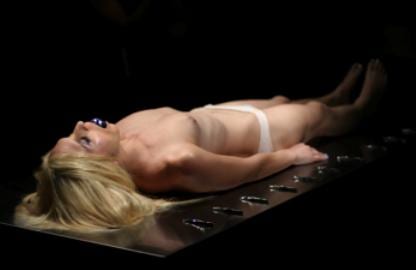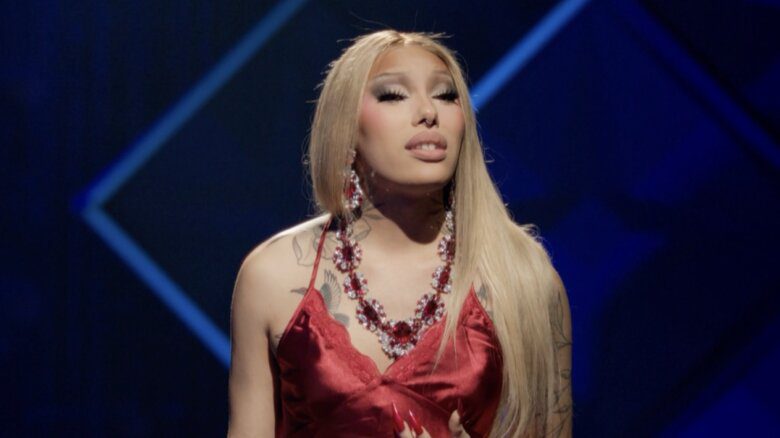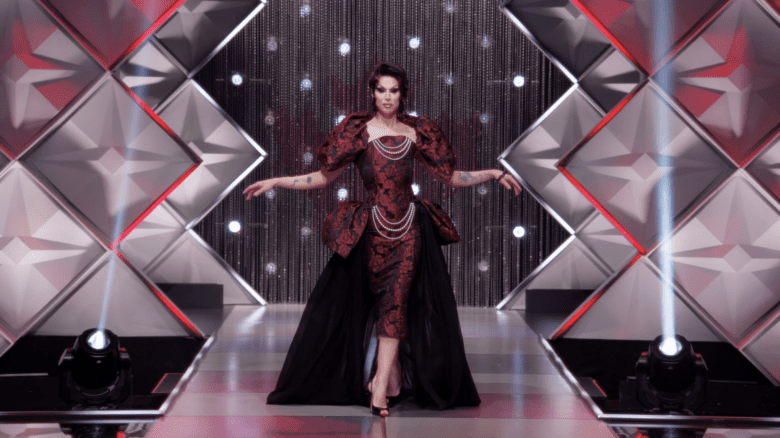
In Hot Soak, UK-based artist Helena Goldwater lies in a bathtub while individual audience members melt ice into her mouth.
Skin is pressed against ice for hours. Strangers collectively pluck the hairs from an androgynous body. A fist bleeds.
These are just a few performance highlights that will take place in Regina as part of this year’s Queer City Cinema’s performance festival, Performatorium.
According to the Queer City Cinema website, the festival promises to be just as “extreme, spectacular, sensational, sensual, beautiful and dangerous” as winter on the Canadian Prairies.
Participants include LA-based Zachary Drucker, the UK’s Helena Goldwater, Montreal dancer-choreographer George Stamos, former professional wrestler Jamie Lewis Hadley, Saskatoon artist Cindy Baker, and bodybuilder Heather Cassils, who will attempt to melt an ice sculpture with her body heat.
“I think the point was always, If I’m going to do this, let’s do it full-on,” says festival curator and creator Gary Varro.
Varro started Queer City Cinema as a biennial film festival in 1996. In 2002, it branched out to include a performance art series. This is the first year the performance festival will be held separately from the media festival.
When choosing the lineup, Varro says, he wanted to explore the theme of audience participation. “I started [thinking] if there’s no audience, does performance exist?”
He chose work that incorporates fluids – blood, melting ice, spit – as a metaphor for the fluidity of identities, he says.
Much of the work involves themes of risk and endurance, not unlike the experiences of queer people in a hostile culture – and not unlike the experiences of performance artists in a society that dismisses them.
“I think sometimes art and performance together are more difficult than being gay,” Varro says. “It’s so outside most people’s vocabulary – visual or otherwise – that it becomes difficult for people to understand and appreciate it.”
Some of the more curious performances include a professional wrestling workshop – where participants will learn how to capture and manipulate an audience’s attention – and Cindy Baker’s 24-hour queer underground taxi service, which will take festival-goers to and from performance venues.
Varro admits he’s presenting art that might be considered unusual, but he says there’s a “real humanity” to it.
“There’s a way for everyone to connect to it if they can just see past the things that they might think are strange or unusual or unattractive or not normal,” he says, noting it hasn’t been easy curating a queer arts festival in Saskatchewan.
“It’s a place I love and hate,” he says.
In 2000, Queer City Cinema came under attack in the Saskatchewan legislature for hosting a panel discussion on pornography. For two weeks, Saskatchewan Party MLA June Draude called on the government to pull the festival’s public funding.
“That was the pinnacle of discomfort and fear,” Varro says.
But looking back at the incident, Varro says the attack had an unintended effect: it raised the profile of the festival and garnered public support for it.
“I think [the Saskatchewan Party] was somewhat surprised that they didn’t get the public rallying behind them,” says Varro. “They learned something about the world they’re living in, even here in Saskatchewan, which I think is surprising . . . It’s actually a very progressive place in some ways, but it doesn’t necessarily read that way if you look around.”
For the most part, queers are invisible in Saskatchewan, he says.
“It feels like you’re living in a very small place sometimes. The mentality here makes you go, ‘Oh my God.’ But, on the other hand, it’s a really great place to do things like this, because no one else is doing them, and I think it begs for that.”
The Deets:
Queer City Cinema

 Why you can trust Xtra
Why you can trust Xtra


